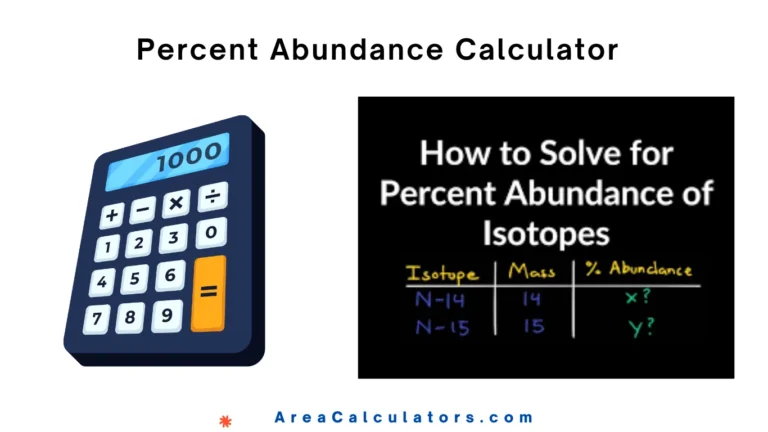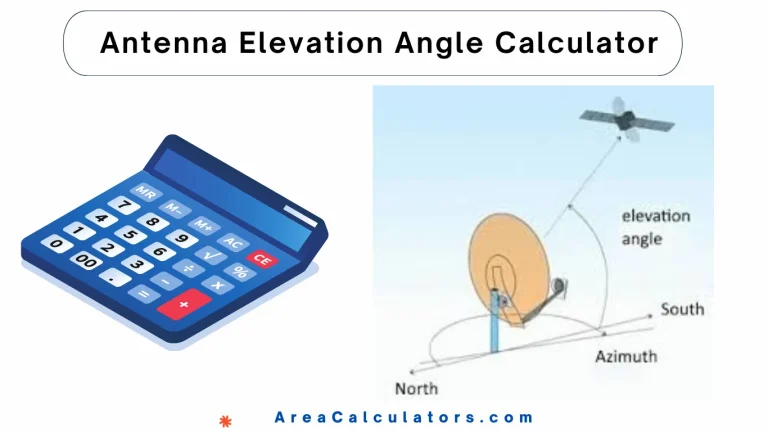Light doesn’t always move in a straight line.
When it passes through water, glass, or even air layers, it bends. This bending is called light deflection — and it’s not just a science experiment. It’s how we see rainbows, how lenses focus, and even how stars twinkle.
But how much does the light bend? Can we measure that angle?
Yes, we can. And that’s exactly what the Light Deflection Angle Calculator helps with. It takes inputs like angles or material properties and gives you the angle by which light changes its path.
A simple tool, yet full of clarity.
What the Light Deflection Angle Calculator Does?
This calculator isn’t guessing. It’s applying physics.
When light goes from one medium to another — say air to glass — it slows down or speeds up. This change causes the light to bend. The angle at which it bends depends on the materials involved and the angle it entered.
You don’t need to know the physics law by heart.
You don’t need to do sine function calculations.
The calculator handles it — and shows you how much the light was deflected.
The Simple Formula Behind Light Bending
🧮 Formula:
Contents
- 1 🧮 Formula:
- 2 📊 Variables Explained in Plain English
- 3 Example: How to Use the Calculator Step-by-Step
- 4 Real-Life Uses: Where Light Deflection Is Important
- 5 Benefits of Using the Calculator
- 6 Common Mistakes to Avoid When Calculating Deflection
- 7 Tips for Getting Reliable Results
- 8 Manual vs Calculator Approach
- 9 FAQs:
- 10 Conclusion:
θd = θi – θr
Where:
-
θd is the deflection angle
-
θi is the angle of incidence (the incoming light)
-
θr is the angle of refraction (the bent path)
It’s based on Snell’s Law, but simplified here for direct calculation.
📊 Variables Explained in Plain English
| Variable | What It Means |
|---|---|
| θi | The angle at which light hits a surface (degrees) |
| θr | The angle at which light travels after bending (degrees) |
| θd | The total angle the light was deflected (degrees) |
Example: How to Use the Calculator Step-by-Step
Say you shine light at an angle of 60° onto a glass surface. The light bends inside and travels at 40°.
Here’s how to find the deflection:
θd = θi – θr
θd = 60 – 40 = 20°
So, the light has been deflected by 20 degrees from its original path. That might seem small, but in optics, it’s everything.
Real-Life Uses: Where Light Deflection Is Important
This isn’t theory. You see it around you all the time:
🔍 Magnifying glasses – Focus light into one point
👓 Eyeglasses – Correct how light enters your eyes
📷 Camera lenses – Sharpen or zoom in images
🧬 Microscopes – Light bends to magnify the tiniest cells
🌌 Astronomy – Gravity itself bends light from stars
🧪 Physics labs – Refraction angles confirm material properties
Understanding deflection helps us build tools that sharpen vision — or see the universe.
Benefits of Using the Calculator
✅ Instant clarity — no manual angle charts needed
✅ Useful in science, photography, optics
✅ Perfect for students and professionals
✅ Makes physics less intimidating
✅ Saves time when doing repeated setups
One input, one answer. The kind of simplicity that science deserves.
Common Mistakes to Avoid When Calculating Deflection
❌ Confusing incidence and refraction angles
❌ Using radians when calculator expects degrees
❌ Forgetting to measure angles from the normal (not the surface)
❌ Mixing up angles entering vs. exiting the medium
❌ Applying the formula to reflective situations — it’s for refraction only
Measure right, and the light will guide you.
Tips for Getting Reliable Results
✅ Use a protractor or digital tool to measure angles accurately
✅ Keep materials clean — smudges distort light
✅ Stay consistent with units (degrees vs radians)
✅ Input correct refractive indices if using extended calculators
✅ Double-check entry and exit media — like air to water, or glass to air
The path light takes depends on what it enters and how. Be precise.
Manual vs Calculator Approach
| Aspect | Manual Method | Light Deflection Calculator |
|---|---|---|
| Speed | Needs geometry knowledge | Instant, user-friendly |
| Accuracy | Risky with wrong angles | Straightforward and consistent |
| Best For | Learning physics laws | Fast lab work, lens design, optics |
| Confidence | Requires checking | Built-in formula trust |
One is for the blackboard. The other is for the real world.
FAQs:
1. What is light deflection?
It’s the change in direction when light passes from one material into another.
2. What causes light to bend?
A change in speed due to the material’s optical density — this is called refraction.
3. Can this calculator be used for all types of light?
Yes — visible, infrared, ultraviolet — the principle is the same.
4. Do I need to know refractive indices?
Not for this basic version. Just the input and output angles.
5. Can it be used for curved lenses?
Not directly — this works best for flat surface transitions.
6. Does it work for reflection?
No — reflection follows different rules. This is only for refraction-based deflection.
Conclusion:
Light moves fast — but not blindly. It bends, it shifts, it adapts.
The Light Deflection Angle Calculator shows you how — clearly and quickly. From classrooms to camera labs, this tool brings invisible changes into view.
It doesn’t replace learning. It supports it.
Use it to understand. Use it to teach. Use it to build.
Because once you know where light bends, you can shape what the world sees.






